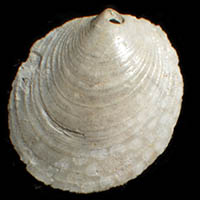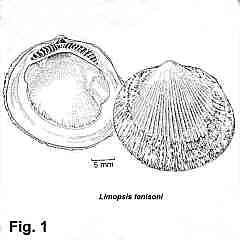|
< Previous family introduction |
|
|||||
|
|
Family Limopsidae False Dog Cockles
|
|||||
|
The Limopsidae is a small family of marine bivalves grouped with the Glycymerididae and Philobryidae. Huber (2010) gave the number of species in the family as more than 80. They range in size from very small to medium, with the NSW species ranging from 5 mm up to 34 mm in length. The family is worldwide in distribution, but species are more numerous in colder waters. Limopsids live from sub-littoral to bathyal depths; the NSW species are known from 73-914 m depth. Species are either epifaunal (living on the ocean floor), attached by byssus to gravel, stones or shell fragments, or infaunal, buried in soft sandy or muddy substrates. Family References The family in Australia was catalogued by Lamprell & Healy (1998), but the present treatment diverges somewhat from their catalogue. Coverage All species of the family found in NSW are detailed here. Identification Notes Shells of limopsids are approximately circular, with a sparsely-toothed taxodont hinge. There is a resilifer – a triangular depression where the ligament sits – above the middle of the hinge (Fig. 1). The interior shows the scars of the adductor muscles, the posterior being larger than the anterior. There is a spiculose periostracum, often restricted to the margin of the shell. Fig. 1 Limopsis tenisoni from Southern Synthesis p. 258, Fig. 6.5 Additional Species Limopsis brazieri Angas, 1871 This species was described from specimens dredged off Sow and Pigs Reef in Sydney Harbour, but there are no specimens in the Australian Museum collection identified as this species. The type specimens are in the British Museum, and Lamprell & Healy (1998, sp. 121) gave a photo of a syntype.
|

